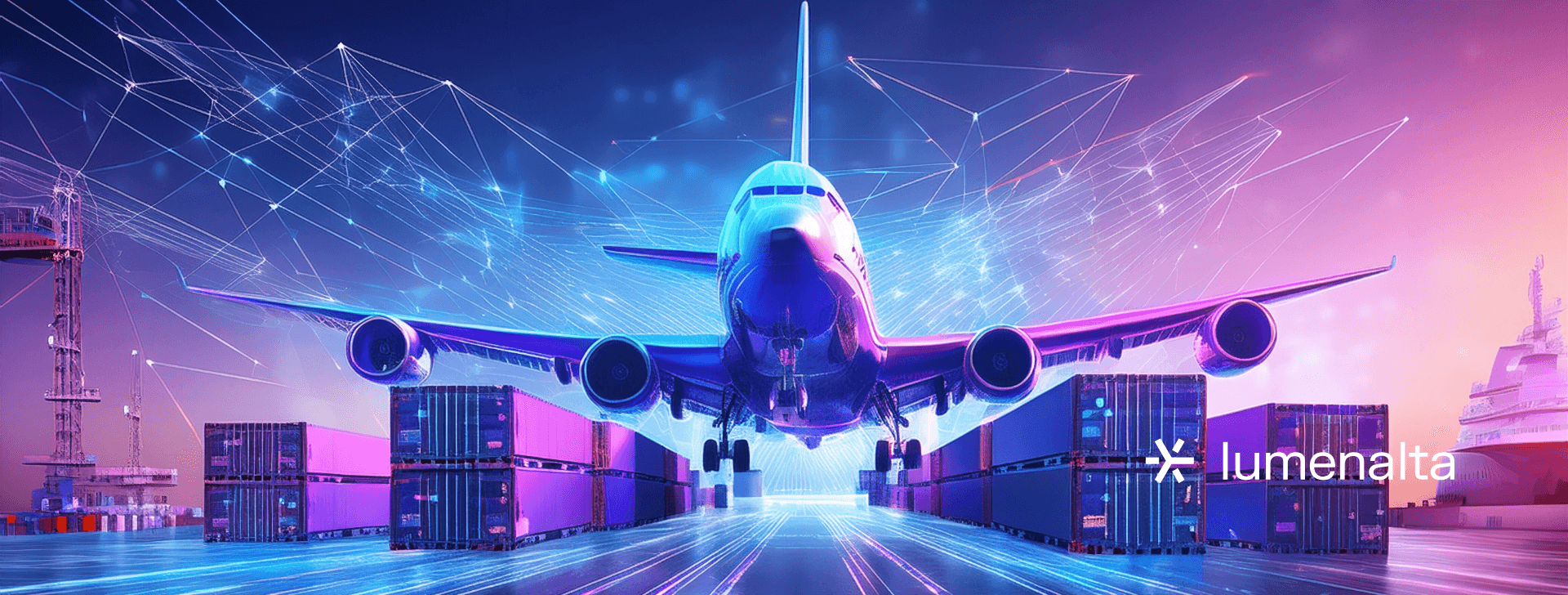

5 Benefits of freight smart logistics
MAR. 21, 2025
4 Min Read
Efficient shipping methods and real-time data insights reduce costs and build a stronger supply chain.
Freight smart logistics represents a highly advanced approach that consolidates technology, streamlined processes, and accurate tracking. This methodology elevates service quality by focusing on speed, transparency, and collaboration. Adopting this mindset allows businesses to keep pace with market trends and unlock fresh revenue possibilities.
key-takeaways
- 1. Freight smart logistics simplifies complex shipping tasks through integrated data and automated workflows.
- 2. Supply chain visibility improves accuracy and allows teams to respond to disruptions early.
- 3. Cost reduction opportunities arise from standardized processes, optimized routes, and data-centric planning.
- 4. Customer satisfaction gets a lift when deliveries are punctual and communication channels remain open.
- 5. Responsible resource use supports long-term sustainability goals and fosters strategic growth.
What is freight smart logistics?

Freight smart logistics refers to a technology-based approach that optimizes how goods are transported, tracked, and delivered across the supply chain. This methodology merges real-time visibility tools, data analytics, and automated processes to streamline end-to-end shipping operations. The purpose is to reduce delays, cut costs, and increase transparency. Professionals often adopt this model to handle large volumes with minimal errors.
Core elements include integrated systems that gather shipment details from multiple touchpoints. These systems allow stakeholders to synchronize information, schedule deliveries, and reduce manual tasks. Cloud-based solutions also play a major role in ensuring data is accessible without disruptions. This approach is popular among organizations seeking faster deliveries and improved customer experiences.
“Cloud-based solutions also play a major role, ensuring data is accessible without disruptions.”
5 benefits of freight smart logistics

1. Enhanced operational efficiency
Logistics managers benefit from streamlined workflows that reduce manual tasks and standardize processes. Data-centric insights allow teams to plan shipments more accurately, eliminating guesswork on delivery times. Centralized control leads to better coordination between carriers, reducing downtime across the entire network. This structure directly minimizes delays and costly errors while delivering consistent performance.
Teams that adopt freight-smart logistics typically observe a decline in wasted resources and a boost in on-time shipping rates. This improvement saves money and prevents rework on shipments. Enhanced workflows also free employees to focus on higher-value tasks like negotiating partnerships or refining service offerings. Operations become more predictable, which reduces stress for personnel and fosters more reliable outcomes.
2. Improved supply chain visibility
Planners gain a holistic view of goods from the moment they are picked up until final delivery. Real-time tracking reveals potential bottlenecks and offers strategies to avert disruptions before they escalate. Consistent transparency also builds trust among all partners, creating a shared understanding of each shipment’s progress. Teams rely on this clarity to make quick adjustments and safeguard shipping timelines.
A well-integrated system merges data from multiple sources, including carriers, warehouses, and dispatch centers. This integration eliminates silos and encourages continuous updates on parcel status. Elevated visibility often cuts down on wasted hours spent chasing information manually. The outcome is a more reliable network that fosters stronger relationships with clients and vendors.
3. Cost reduction opportunities
Freight charges can skyrocket when shipments are poorly coordinated or routed. Identifying optimal transportation modes is easier when all relevant data is aggregated in a single platform. Predictive analytics inform decisions on container space utilization, allowing carriers and shippers to select more cost-effective setups. Routing optimization further removes redundant stops and ensures assets are used efficiently.
Companies recognize substantial savings once they align daily processes with consistent data insights. Standardized procedures reduce overtime costs and eliminate the risk of missed shipments. Fuel use is cut down when drivers have well-planned routes, which lowers overall costs and carbon emissions. Cost-conscious moves like these translate into healthier margins and improved budget forecasting.
4. Increased customer satisfaction
Late deliveries damage customer trust and can cause lost revenue for businesses. Freight smart logistics mitigates these risks by orchestrating timetables that factor in real-time conditions. Faster deliveries and accurate order updates cultivate confidence among buyers, leading to recurring purchases. Upselling opportunities also grow when clients believe they can rely on service consistency.
Open communication channels keep customers informed about package status and expected arrival windows. This clarity allows businesses to differentiate their service offerings in a crowded market. Minimizing disruptions significantly reduces complaint volumes and fosters a more positive brand image. Positive reviews and repeat contracts emerge when consistent results become the norm.
5. Environmental sustainability contributions

Freight smart logistics integrates eco-friendly strategies through careful planning of routes and load consolidation. Intelligently scheduled shipments make better use of available space, which lowers emissions and reduces overall energy consumption. Automated platforms help reduce paper use through digital documentation, cutting waste on daily tasks. Data insights also guide carriers toward greener transportation options that meet global standards.
Conscious resource management supports the sustainability goals of enterprises across many industries. Reducing empty miles and selecting cleaner fuels translates into cost savings and a greener reputation. Lower carbon footprints open doors to new partnerships with businesses that prioritize responsible operations. These environmentally aligned moves strengthen relationships with regulatory bodies and help secure future growth.
“Fuel use is cut down when drivers have well-planned routes, which lowers overall costs and carbon emissions.”
Challenges of implementing freight smart logistics
Implementation can present difficulties despite the appeal of modern freight logistics. Some organizations must adjust legacy systems, and others grapple with limited budgets. Cross-functional alignment is also essential because any disconnect between departments disrupts smooth operations. Clear planning and strong leadership usually help address these concerns.
- Reliance on older technology: Traditional systems often lack the flexibility to handle new data-intensive workflows.
- Data integrity risks: Inaccurate or inconsistent information complicates scheduling and causes shipment errors.
- Limited executive support: Without buy-in from leadership, initiatives might lack the resources needed to succeed.
- Compliance obstacles: Freight shipping involves legal regulations that add complexity to adopting new tools.
- Workforce resistance to change: Training and communication are required to ensure employees are ready for updated processes.
These obstacles highlight the importance of proactive risk assessments and early stakeholder engagement. Tools alone are not enough; every part of the supply chain must unite around shared performance metrics. Communication channels that link IT teams, logistics planners, and leaders are vital. This concerted effort cultivates a robust framework that withstands operational challenges.
Strategies for optimizing freight smart logistics

Optimization depends on the alignment of technology, human resources, and effective governance. Every improvement initiative should include quantifiable KPIs, ensuring progress remains visible to executives. Cloud-based platforms often serve as the foundation for advanced data processing. Strategic planning also ensures each investment targets a specific shortfall, preventing wasted spending.
Scalability is a major concern for businesses seeking consistent improvement. Smaller pilot programs can gather key feedback before committing to a full-scale rollout. Timely performance evaluations confirm that any new tool or practice effectively supports efficiency and budget goals. Teams can then invest in further expansions or refine existing methods for even better outcomes.
Using advanced technologies
AI-powered systems automate tasks such as load matching, scheduling, and route planning. Machine learning parses historical data, revealing patterns that guide shipping decisions and prevent costly mistakes. Drone deliveries and autonomous vehicles are on the horizon, potentially cutting transit times and supporting more resilient transport options. Continuous evaluation of these innovations ensures organizations only invest in solutions that yield measurable gains.
Enhancing data analytics capabilities
Centralizing data in one platform reduces duplication and organizes complex shipping details. Predictive tools forecast order surges, helping carriers plan resources more efficiently. Logistics teams draw on real-time dashboards to compare key metrics and adapt quickly to shifting conditions. Data-backed decisions minimize guesswork, lowering financial risks and keeping departments informed.
Fostering collaboration among stakeholders
Carriers, freight forwarders, and warehouses benefit when information flows smoothly between them. Interconnected communication platforms 3reduce delays caused by missing data or unclear instructions. Clear responsibilities keep everyone accountable while supporting continuous performance improvements. Early involvement from all contributors increases buy-in and helps align operations around shared goals.
Continuous monitoring and improvement
Real-time tracking tools pinpoint where shipments deviate from planned schedules. Frequent reviews and audits offer timely insights into bottlenecks that might affect customer satisfaction. Minor adjustments can be deployed quickly to resolve any recurring issues, preventing bigger disruptions later. This mindset fosters a culture of agility, where each new challenge is seen as an opportunity to refine processes.
Investing in employee training and development
Skilled teams know how to handle advanced shipping technologies and interpret analytics outputs. Training modules should be tailored to different roles, from dispatchers to executives, to maximize adoption. Mentorship programs also boost morale, offering personnel clear growth paths. Well-trained employees deliver consistent operational excellence and drive meaningful returns on technology investments.
Measuring ROI of freight smart logistics

Return on investment reflects any freight-related productivity gains alongside cost savings and revenue boosts. Evaluating performance metrics such as on-time deliveries, reduced errors, and optimized routes helps quantify success. Accurate measurements also create baseline data that guides future expansions or upgrades. Leaders appreciate tangible outcomes that validate budget allocations and strategic direction.
Organizations track ROI through consistent reporting on factors like customer retention and resource utilization. Incremental improvements can then be compared against initial projections to verify results and refine estimates. Data-backed proof of progress builds confidence and secures support for further logistics innovation. Consistent gains reinforce a proactive culture that values continual growth in modern freight logistics.
Freight smart logistics is a gateway to accelerated, data-centric, and resource-conscious supply chain improvements. This approach amplifies efficiency, reduces costs, and supports growth across every transport channel. At Lumenalta, we tailor solutions to match your shipping priorities, ensuring you remain at the forefront of innovation. Let’s chart a brighter path forward.
table-of-contents
- What is freight smart logistics?
- 5 benefits of freight smart logistics
- 1. Enhanced operational efficiency
- 2. Improved supply chain visibility
- 3. Cost reduction opportunities
- 4. Increased customer satisfaction
- 5. Environmental sustainability contributions
- Challenges of implementing freight smart logistics
- Strategies for optimizing freight smart logistics
- Measuring ROI of freight smart logistics
- Common questions about freight smart logistics
Common questions about freight smart logistics
What sets freight smart logistics apart from traditional approaches?
How does technology support modern freight logistics in reducing delivery delays?
Are smaller businesses able to benefit from freight smart logistics without major capital investments?
How important is staff training for the successful adoption of modern freight logistics?
What are some key performance indicators for tracking freight smart logistics results?
Want to learn how freight smart logistics can bring more transparency and trust to your operations?









